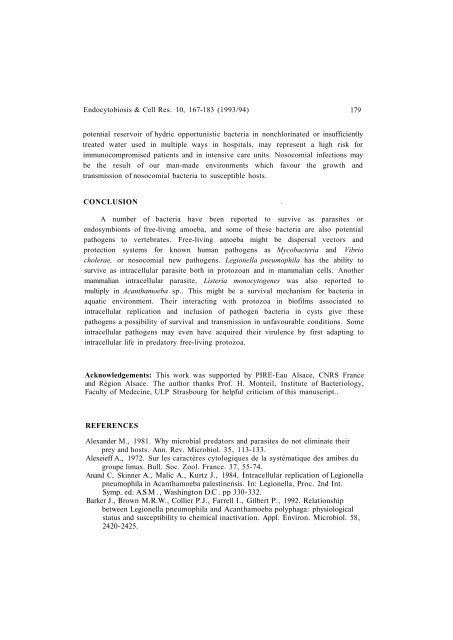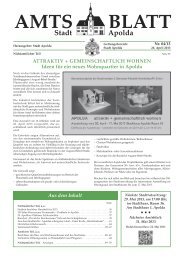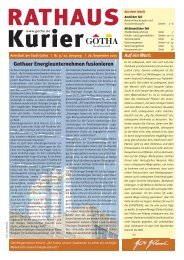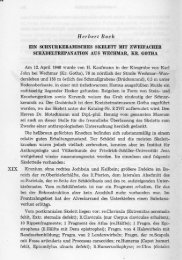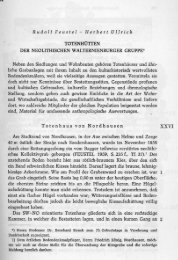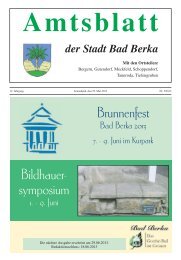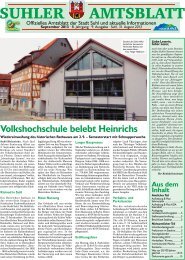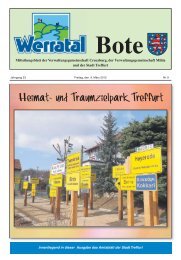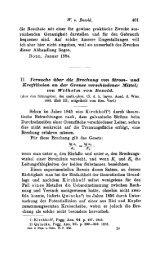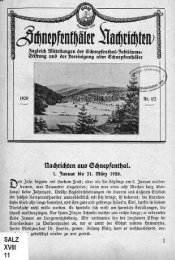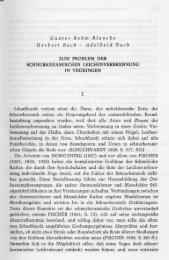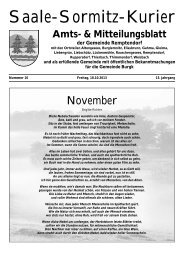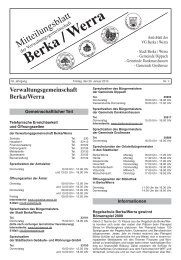FREE-LIVING AMOEBA: INTERACTIONS WITH ENVIRONMENTAL ...
FREE-LIVING AMOEBA: INTERACTIONS WITH ENVIRONMENTAL ...
FREE-LIVING AMOEBA: INTERACTIONS WITH ENVIRONMENTAL ...
You also want an ePaper? Increase the reach of your titles
YUMPU automatically turns print PDFs into web optimized ePapers that Google loves.
Endocytobiosis & Cell Res. 10, 167-183 (1993/94) 179potential reservoir of hydric opportunistic bacteria in nonchlorinated or insufficientlytreated water used in multiple ways in hospitals, may represent a high risk forimmunocompromised patients and in intensive care units. Nosocomial infections maybe the result of our man-made environments which favour the growth andtransmission of nosocomial bacteria to susceptible hosts.CONCLUSIONA number of bacteria have been reported to survive as parasites orendosymbionts of free-living amoeba, and some of these bacteria are also potentialpathogens to vertebrates. Free-living amoeba might be dispersal vectors andprotection systems for known human pathogens as Mycobacteria and Vibriocholerae, or nosocomial new pathogens. Legionella pneumophila has the ability tosurvive as intracellular parasite both in protozoan and in mammalian cells. Anothermammalian intracellular parasite, Listeria monocytogenes was also reported tomultiply in Acanthamoeba sp.. This might be a survival mechanism for bacteria inaquatic environment. Their interacting with protozoa in biofilms associated tointracellular replication and inclusion of pathogen bacteria in cysts give thesepathogens a possibility of survival and transmission in unfavourable conditions. Someintracellular pathogens may even have acquired their virulence by first adapting tointracellular life in predatory free-living protozoa.Acknowledgements: This work was supported by PIRE-Eau Alsace, CNRS Franceand Région Alsace. The author thanks Prof. H. Monteil, Institute of Bacteriology,Faculty of Medecine, ULP Strasbourg for helpful criticism of this manuscript..REFERENCESAlexander M., 1981. Why microbial predators and parasites do not eliminate theirprey and hosts. Ann. Rev. Microbiol. 35, 113-133.Alexeieff A., 1972. Sur les caractères cytologiques de la systématique des amibes dugroupe limax. Bull. Soc. Zool. France. 37, 55-74.Anand C, Skinner Α., Malic Α., Kurtz J., 1984. Intracellular replication of Legionellapneumophila in Acanthamoeba palestinensis. In: Legionella, Proc. 2nd Int.Symp. ed. ASM., Washington DC. pp 330-332.Barker J., Brown M.R.W., Collier P.J., Farrell I., Gilbert P., 1992. Relationshipbetween Legionella pneumophila and Acanthamoeba polyphaga: physiologicalstatus and susceptibility to chemical inactivation. Appl. Environ. Microbiol. 58,2420-2425.


